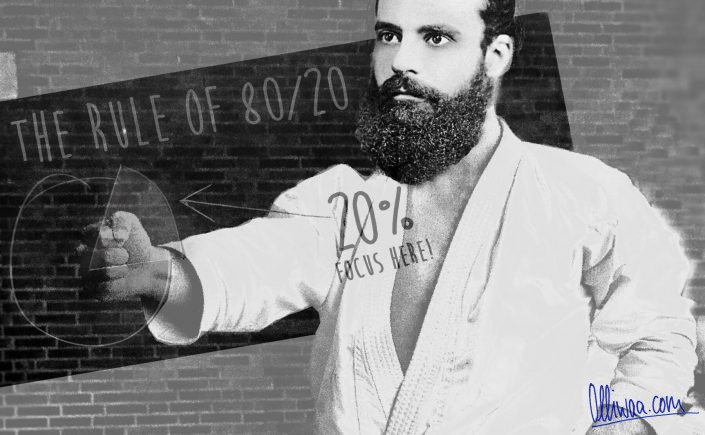
Is the study of karate really a life’s work, or could there perhaps be a faster approach?
Vilfredo Pareto is long dead and yet one of my best friends. He greatly simplified my life and saved me tons of work and money. For example, when it came to renewing our windows. Thanks to Vilfredo, we only paid a fraction of the usual cost, it was done in no time and hardly produced any dirt. On many other occasions he helped me to find the right lever to achieve a good result with minimal effort. True to the motto: Work smart, not hard.
Pareto Principle
The Pareto principle (also known as the 80/20 rule, the law of the vital few, or the principle of factor sparsity) states that, for many events, roughly 80% of the effects come from 20% of the causes. Source: Wikipedia
This principle can be applied in many ways. For example, the shell of a new house is usually completed in no time, while the rest claimes the lion’s share of the entire construction period. In quality management, it can often be observed that 20 percent of all types of defects account for 80 percent of the complaints. Therefore, in order to achieve a significant improvement, one should focus all energy on correcting just those few causes. In the case of our windows, we did not replace everything for a perfect result. We kept the wooden frames and only exchanged glasses. Thus, we save heating energy and thousands of euros, because we are satisfied with a good result.
The arduous way
With karate it feels like forever, until you are able to really defend yourself. Students first learn boring “elementary school” Kihon, they have to memorize forms (kata) without knowing what for, and they have to funnel Japanese terms and compulsory etiquette into their brains. It is a house where one floor is built on the next. Constructing the necessary foundation is a sweaty, agonizingly slow process that is frustrating for many. If someone puts out several weeks, much is lost again. I know people who, even after a long membership, only circle around zero for lack of continuity. In arts like Krav Maga or Thaiboxing on the other hand, things get straight down to business. You learn to fight from the first day, without any frills. If students are missing longer, they just continue where they left off.
If Pareto had been a Karate-Ka
During a car drive in 2016 I asked my karate mentor and friend André Bertel the following question: “André sensei, even if karate is a life task, do you see the possibility to apply Pareto’s 80-20 principle to it and if so, on which 20% of techniques, exercises, etc. should one focus to get a usable karate that covers 80% of standard self-defense cases?” After some pondering, he mentioned the things that also floated in my head: Oi and Gyaku Zuki, Mae Geri, and perhaps Age- and Soto Uke. So, simple blows, a forward kick, and maybe one or two block techniques.
In addition, I would add a few simple rules of behavior and principles that function even under adrenaline. Once this shell is set up, nothing should stand in the way of a beautiful karate house.
Kind regards
Oliver Schömburg (Olliwaa)